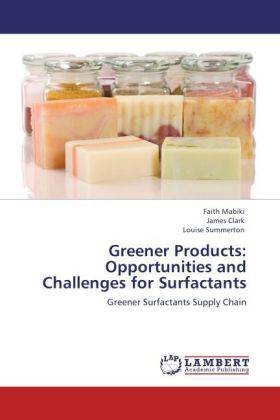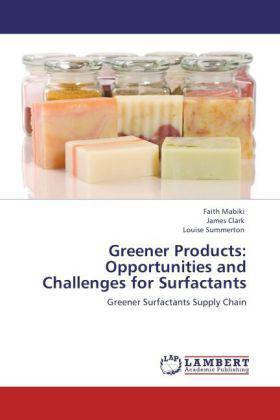
- Afhalen na 1 uur in een winkel met voorraad
- Gratis thuislevering in België vanaf € 30
- Ruim aanbod met 7 miljoen producten
- Afhalen na 1 uur in een winkel met voorraad
- Gratis thuislevering in België vanaf € 30
- Ruim aanbod met 7 miljoen producten
Zoeken
Greener Products: Opportunities and Challenges for Surfactants
Greener Surfactants Supply Chain
Faith Mabiki, James Clark, Louise Summerton
Paperback | Engels
€ 48,45
+ 96 punten
Omschrijving
The use of surfactants in Home and Personal Care products (HPC) is of vital importance due to their wide range of application. Surfactants are the major player in HPC because of their ability in wetting, spreading, dispersing, sticking, solubilization and dissolution. It is then clear that most of the challenges and/or opportunities towards benign (green) surfactant will automatically affect the HPC industry directly or indirectly. Therefore, It is worthy understanding the perspective and views of each of the stakeholders and representatives appearing in the supply chain of the surfactants in order to explore and better understand opportunities and challenges for greener products and how green chemistry can be applied to improve their sustainability.The book presents the views from the stakeholders of Surfactant supply chain which are Suppliers of raw material for surfactants, manufactures and formulators of HPCs, retailers, consumers, NGOs, trade association and water treatment companies. The comparison between developed (UK) and developing countries (TZ) is also discussed.
Specificaties
Betrokkenen
- Auteur(s):
- Uitgeverij:
Inhoud
- Aantal bladzijden:
- 88
- Taal:
- Engels
Eigenschappen
- Productcode (EAN):
- 9783846599372
- Uitvoering:
- Paperback
- Gewicht:
- 138 g

Alleen bij Standaard Boekhandel
+ 96 punten op je klantenkaart van Standaard Boekhandel
Beoordelingen
We publiceren alleen reviews die voldoen aan de voorwaarden voor reviews. Bekijk onze voorwaarden voor reviews.








